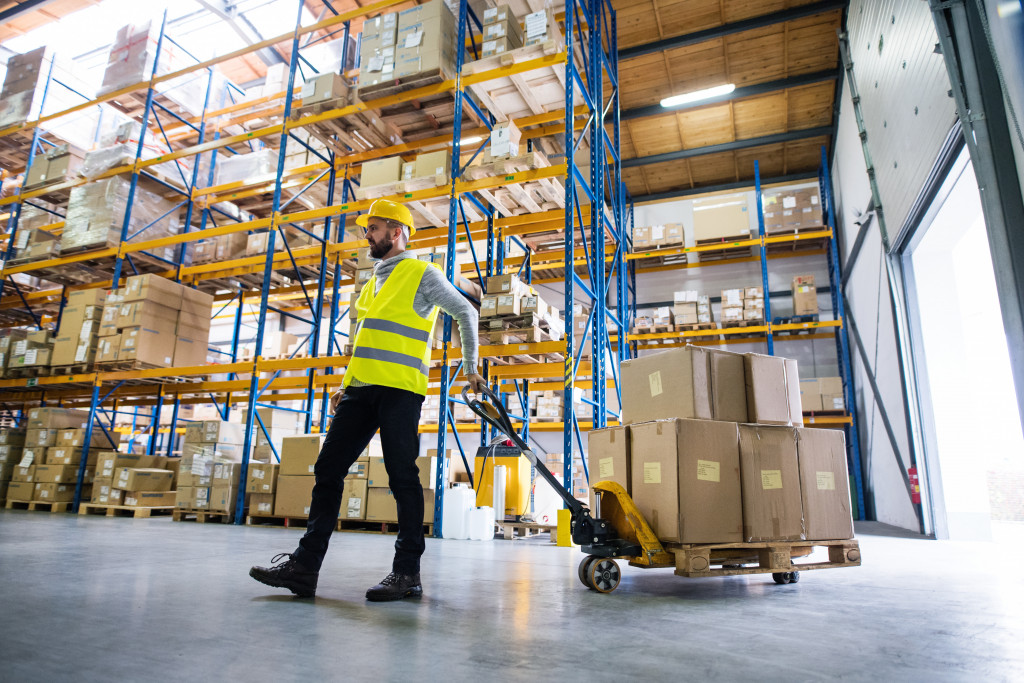With luminous screens, biometric scanners, and robotic personal assistants, the notion of “retail technology” tends to remind us of a shopping experience from the Jetsons. However, in reality, they’re more traffic sensors, RFID tags, handheld scanners, and heatmaps rather than hyper-futuristic and fantastical things.
All of these are intended to provide real-time images of current consumer purchasing activity. These collected data will provide a more in-depth, empathic understanding of your clients’ experiences than ever before, and your company will thrive.
Automated Order Fulfillment and Stock Management
More than 580,000 autonomous mobile robots or AMRs will be deployed by the end of 2025 to help warehouses handle consumer orders. Many shops are attempting to react to the “Amazon Effect” by automating their order fulfillment process to boost their production rates and adapt operations to compete with Amazon. This development has the potential to drastically cut order lead times. Furthermore, warehouses have difficulties finding enough staff to meet demand, making automated solutions an appealing choice.
Inventory management nowadays is also aided by automation. Instead of having staff or employees manually go over the inventory, smart robots and computer software-hardware combinations can deliver accurate inventory data in real-time. This precise data aids merchants in managing inventory flow, making accurate projections, help with deciding strategies while forecasting potential store earnings.
Businesses like Barnwood stores and large-scale retailers utilize automated inventory management to make their processes more efficient. One of the interesting benefits is that inventory automation also reduces waste, spoilage, and even theft by improving inventory control of the stocked items.
Unmanned Stores and Shops
Stores without any cashiers or employees are a big retail trend to pop up in recent times, as social distancing measures remain a public health concern. Experts have found out that contactless or self-checkout solutions are preferred by 87 percent of clients. And true enough, we’re beginning to see these types of stores popping up.
However, doing this requires the implementation of the latest technology: QR code functionality, RFID tags, machine learning, IoT devices, and even facial recognition can be employed. The newly-implemented Amazon Go Grocery concept uses this type of technology to great effect. What customers put in their shopping basket is tracked by Amazon’s in-store IoT network.
Then, when they leave the shop premises, the store automatically charges the customer’s financial accounts of their purchases. And because the transactions are contactless, health risks can be further decreased. Consumers can scan QR codes and barcodes through their smartphones to get more information about products or even purchase them without ever touching them.

Voice Search Is Gaining Prominence
Here’s an interesting development: voice search is growing its user base, and more people are becoming more comfortable vocalizing their requests and queries. Voice search is used by nearly one-third of internet users to receive information about their products or even to shop for goods. The market for shopping through voice search is predicted to reach $40 billion very soon.
E-commerce businesses with successful voice search tactics establish sound SEO methods and develop brand affinity between information skills such as product details and review videos and actions. They can also provide a positive customer experience. And because of this, they experience significant success, with numbers continuously increasing.
Online Financial Technology Is Ever More Important
Digital payments were worth $3.04 trillion in 2017 but are expected to grow to $6.6 trillion by 2021, more than tripling in only four years. The statistics show one thing: e-wallets and financial technology are important and booming.
Other than improving sales and converting more potential clients into customers, online financing helps you keep more avenues for your business to keep its finances safe. The usage of an eWallet by retailers improves the usability and security of their consumers.
Clients don’t have to input their credit card information on the Internet or hand it over to the cashier anymore. Modern financial tech has minimal personal requirements, yet it works. This level of security and consistency makes it so that more people use them, resulting in a tighter and more efficient online commerce system.
The purpose of retail technology is to make shopping less stressful and more enjoyable for everyone involved. It makes the operations more efficient for the workers and more convenient for the shoppers.
When it comes to industry-changing technologies, the Internet came first, followed by cellphones, which opened up new trading avenues and opportunities. It’s undeniable that technology will play an even more critical role in retail in the future. People can only wait and see what future technology keeps in store for them.


